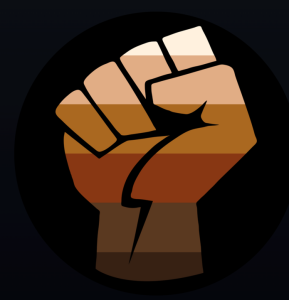9.1 Oppression-Based Stress and Trauma
Learning Objectives
By the end of this chapter, you will be able to
- Describe the impact of chronic racism and other oppression-based stresses on health
- Explain the theories of weathering and allostatic load
Oppression-based stress extends the concept previously referred to as minority stress (Meyer, 1995), which is chronic stress experienced by members of historically marginalized groups due to societal stigma. A newer term, oppression-based stress explicitly names the stress “minorities” experience that results directly from social oppression, which is “an asymmetrical power dynamic characterized by domination and subordination of a group by restricting access to social, economic, and political resources” (Williams et al., 2023). It is important to note that people who are minoritized often represent the global majority (e.g., there are more BIPOC in the world than White people). However, in a local context, they may be minorities or have minority access to resources. Examples of populations that experience oppression-based stress include racial minorities, gender minorities, sexual minorities, and other people embodying identities that are socially othered.
In the United States, American Indian/Alaska Native (AIAN) and Black Americans have higher rates of morbidity and mortality than White Americans for almost all health outcomes. The average life expectancy is 67.9 years for AIAN, 72.8 years for Black Americans, and 80 years for White Americans. There are many mechanisms contributing to this differential in mortality, including socioeconomic status, which manifests itself in access to quality health care, food, built environments, and other social determinants of health.
In addition to social determinants of health, race-based stress and trauma, a specific type of oppression-based stress, may contribute to differences in mortality and health for people of color. Race-based stress refers to the aggregated impact of racialized perpetrations that people of color have experienced over their lifetimes. These experiences can cause detrimental changes to mental health, such as lower self-esteem, low mood, and hypervigilance about stimuli that remind them of previous perpetrators, such as people, places, or institutions.

This stress has been described as a “weathering” (Geronimus et al., 2006), which hypothesizes that Black Americans experience early aging or “health deterioration as a consequence of the cumulative impact of repeated experience with social or economic adversity and political marginalization.” Weathering is a metaphor referencing a natural phenomenon in which rock formations show patterns of etching (see Figure 9.1) due to the aggregated effects of weather, such as snow, water, and heat, breaking down the surface of the rock over time. In BIPOC, this phenomenon has also been described as the allostatic load, or the cumulative wearing and tearing on the human body’s system due to the need to constantly adapt to stressors (McEwan et al., 1998). Importantly, these racial differences in health outcomes are observed at all socioeconomic levels.
How does race-based oppression weather the health of BIPOC? One mechanism is through hypervigilance, which is the state of being keyed up, on edge, or continuously vigilant and scanning the environment for danger (e.g., racism). This stress can be a major contributor to chronic health conditions, such as cardiovascular disease and elevated blood pressure (Smith et al., 2019). Other symptoms include (a) intrusion symptoms, such as flashbacks or nightmares during which people find themselves replaying negative racialized encounters in their mind, even when these memories are unwanted; (b) changes in mood and thoughts, such as persistent feelings of sadness, shame, or fear, and decreased trust in the world; and (c) avoidance of people or places that remind them of previous negative racialized experiences.
Media Attributions
- Black Power Fist is licensed under a CC BY (Attribution) license
- Limestone solution weathering is licensed under a CC BY (Attribution) license
"an asymmetrical power dynamic characterized by domination and subordination of a group by restricting access to social, economic, and political resources” (Williams et al., 2023)
The cumulative wearing and tearing on the human body’s system due to the need to constantly adapt to stressors
The state of being keyed up, on edge, or continuously wary/vigilant and scanning the environment for danger
symptoms such as flashbacks or nightmares in which people find that unwanted memories of negative encounters repeatedly enter their minds

